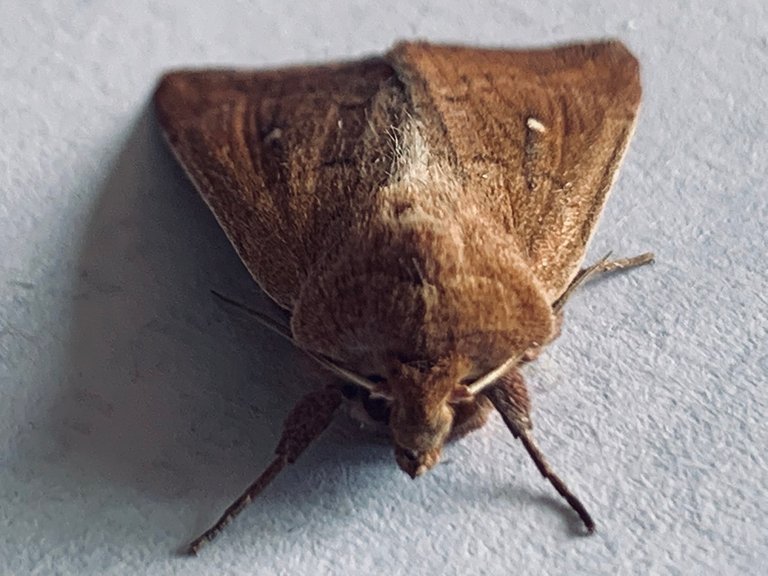
Image Source Stem borer
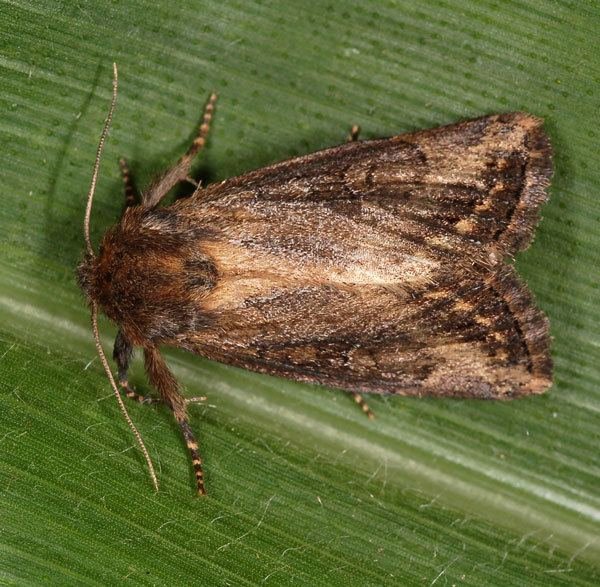
Image Source Adult Stem Borer
STEM BORER (AFRICAN MAIZE STEM BORER)
The African Maize Stem Borer (Busseola fusca) is a moth found mostly in Africa. It is one of the most destructive insect pests of maize in Africa and other areas of the world. If left unchecked, it can cause significant crop loss (between 10% and 100%).
MORPHOLOGY
There are usually 3 stages of development of this insect pest. The egg, larva (caterpillar), pupa and adult.
Egg
Stem borer eggs are often laid beneath the sheath of leaves and look milky when newly laid but darken before hatching. The eggs are hemispherical in form and typically 0.8 - 1mm in diameter. They are often placed in groups of 30 to 200.
https://keys.lucidcentral.org/keys/v3/eafrinet/maize_pests/key/maize_pests/Media/Html/images/Busseola_fusca_(Fuller_1901)_-_African_Maize_Stalkborer/B.fusca_eggs.jpg
Image Source Eggs of stem borer
Larva
The larva (caterpillar) is normally creamy-white in colour with grey markings on the segments, however it lacks prominent hairs on its back, unlike other insect larvae. A grown larva's back generally has a pink or pastel purple-grey suffusion (it seems damp). The larva's head is dark brown, whereas the prothorax is yellowish-brown. The spiracles (i.e., breathing holes found along the side of the body) on the side of the segments are elongate-oval (looks like a stretched circle) with black edges. It has a pair of tinny legs (prolegs) attached to the segments that act as the abdomen.
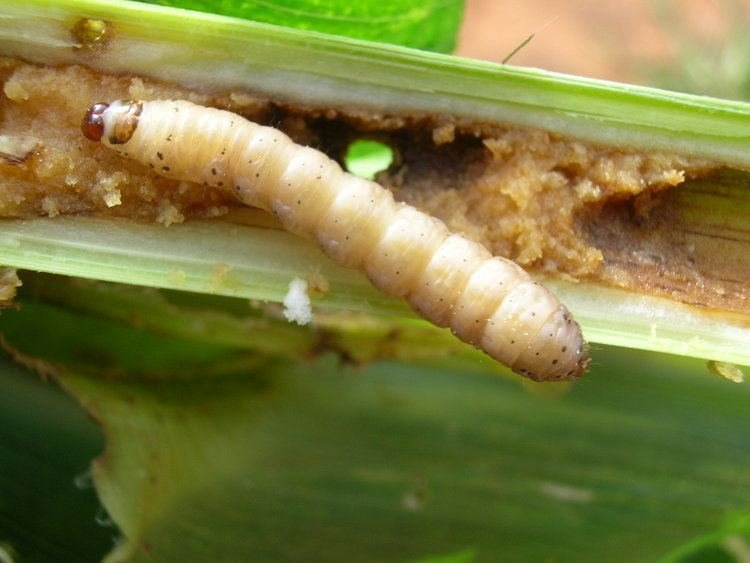
Image Source Larva of stem borer
Pupa
The pupa of a stem borer is usually dark brown and measures about 25 mm in length.
Adult
The adult moth/stem borer is typically dark brown in colour, however some mature individuals might have a lighter colour. The stem borer has a wingspan that ranges from 25 to 40mm in length. The front wings have a dark brown colour. This adds to the insect's dark-brown colour, whereas the hind wings are creamy or virtually white in colour. Adult stem borers are primarily active at night searching for a mate.

Image Source Adult Stem Borer
NATURE OF DAMAGE CAUSED AND SYMPTOMS OF INFESTATION
Nature of damage
The nature of damage caused by The African Maize Stem Borer is similar to those caused by other maize stem borer around the world.
The female stem borer lays an average of 200 eggs preferably on the leaves of young plants of about 2 months on old. The eggs hatch after 3 - 5 days.
After hatching the larvae (sing. Larva) which is the destructive stage of the insect feed on the leaves of maize making characteristic holes in them or patches of transparent leaf holes. They also eat into the growing point of maize, causing newly formed leaves to appear to dry out (appear burnt). In severe cases, this can lead to the death of crops, especially those cultivated in less fertile soil.
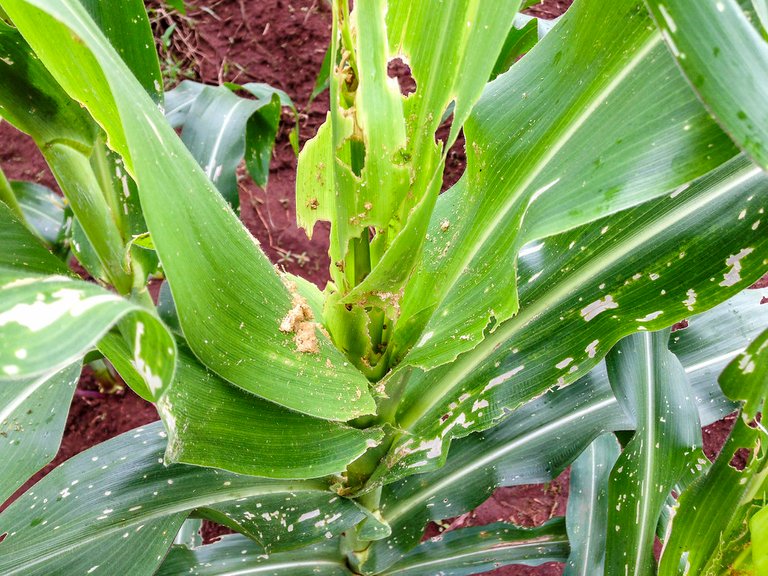
Image Source Damage caused by stem borer
Older larvae after the third moulting tunnel into the stems and ears (cobs) of maize making holes in the stems and ears, and destroying the grains/kernels. The tunnelling destroys the leaf whorls and weakens the stem which may lead to stem breakage. Characteristic frass (fine powdery refuse or faeces) can be seen on the points of entry on the leaves, stem and ears (cobs) of maize).
 Image Source Damage caused by stem borer
Image Source Damage caused by stem borer
After 3 – 5 weeks of feeding and wreaking havoc on the farm, the larvae turn into papa. The pupa develops into an adult within 1 – 2 weeks.
Some common signs seen on infected plants include:
- Dead heart: The central leaves of infected plants becomes dry and withered. this condition is called dead heart.
- Visible frass can be seen at the point of entry.
- Young terminal leaves have holes in them caused by the larvae.
- Streaks (abnormal colours) may appear on the side of the stems.
- When open the stems contain long tunnels filled with frass made by the insect larvae.
- The ears of affected maize also contain tunnel-filled frass.
Preventive and Control Measures
Here are some ways to prevent and control this menace
Cultural /physical method:
- Cultivate resistant varieties of maize.
- Plant early when the insect pest population is low.
- Regularly inspect plants for symptoms of infestation.
- Rotate maize with legumes such as cowpea to curtail the future spread of stem borer.
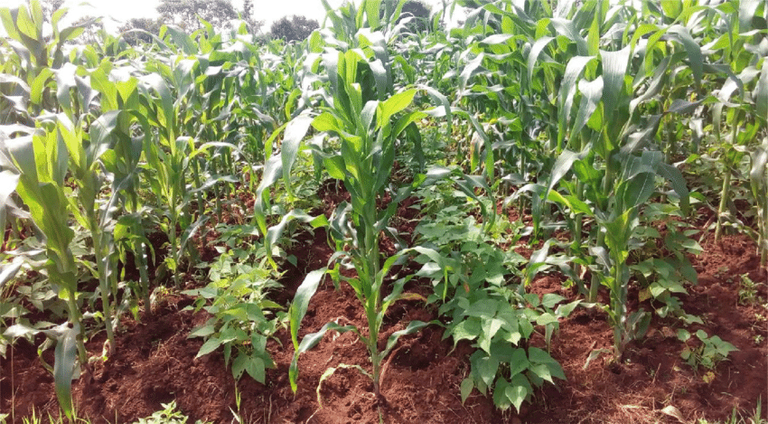 Image Source Maize intercrop with cowpea
Image Source Maize intercrop with cowpea
- Destroy infected crops and crop debris to reduce the chances of a spread.
- Intercrop maize with cassava and legumes has been known to reduce the infestation of stem borers.
- Apply sufficient amounts of Nitrogen fertilizer to the crop to enable crops to withstand the attack.
Biological method
The introduction of predators and pathogenic organisms can help to reduce the population of African Maize Stam Borer.
- The fungus Beauveria bassiana and bacterium Bacillus thuringiensis can be applied as biopesticides to control African Maize Stam Borer when available.
- Insects such as predatory mites, thrips, lacewings, carabid beetles, soldier beetles and ladybird beetles feed on the larvae and pupa of stem borers thereby killing them and reducing the population.
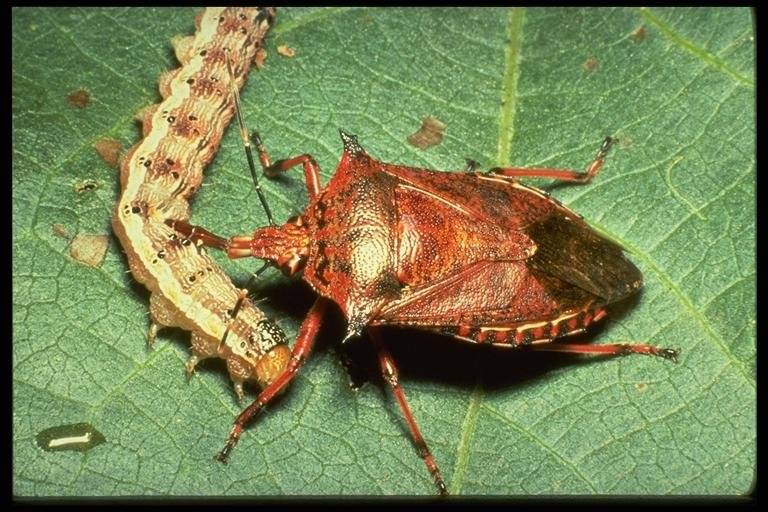 Image SourceSoldier beetle feeding on a larva
Image SourceSoldier beetle feeding on a larva
Chemical method
Different pesticides (insecticides and larvicides) are approved globally for the control of African Maize Stem Borer. Some examples of these buprofezin, endosulfan, dichlorodiphenyltrichloroethane (DDT), chloropyriphos, teflubenzuron, methoprene, profenophos and dimethoate.
Before deciding on which of these pesticides to use, it is advisable to check with the local authority to see which pesticides are approved. Also, check the recommended amount to be used on a farm to avoid killing non-target organisms or causing food poisoning to consumers.
I grow up to know this deadly insects, one of the farmer's nightmare, once they decend on the plant, its always difficult to get over them,...thanks for sharing with us
It ruined my maize garden last year, so I had to do some research about it. This year I'm ready for it.